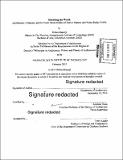| dc.contributor.advisor | Arindam Dutta. | en_US |
| dc.contributor.author | Banerji, Shiben | en_US |
| dc.contributor.other | Massachusetts Institute of Technology. Department of Architecture. | en_US |
| dc.date.accessioned | 2015-06-10T19:15:14Z | |
| dc.date.available | 2015-06-10T19:15:14Z | |
| dc.date.copyright | 2014 | en_US |
| dc.date.issued | 2015 | en_US |
| dc.identifier.uri | http://hdl.handle.net/1721.1/97375 | |
| dc.description | Thesis: Ph. D., Massachusetts Institute of Technology, Department of Architecture, February 2015. | en_US |
| dc.description | Cataloged from PDF version of thesis. | en_US |
| dc.description | Includes bibliographical references (pages 271-295). | en_US |
| dc.description.abstract | This dissertation revises the history of internationalism through a study of the American architects Marion Mahony and Walter Burley Griffin, who practiced in the United States, Australia, and India between 1895 and 1949. Unlike previous studies of internationalism, which have focused exclusively on the transfer of architectural and planning knowledge from the putative 'West' to the 'non-West', this dissertation uncovers a global formulation of community proposed within the colonipl periphery. It does so through a sustained analysis of two objects by Mahony and Griffin: Magic of America, an unpublished memoir and political treatise consisting of correspondence and essays, which Mahony compiled and edited between 1938 and 1949, and Castlecrag, a residential suburb along Sydney's Middle Harbour, which Mahony and Griffin developed between 1920 and 1935. Delineating the scope and provenance of their theoretical writings on imperialism, democracy, international conflict, and trade, as well as their design of common property at Castlecrag, this study charts the emergence of a non-nationalist alternative to empire. Concomitantly, it argues that the conceptual sources and motivations for this alternative, global community were far removed from instrumental politics, and flowed instead from a moral-philosophical thesis that evaluative meaning existed in our relations with others. Finally, this dissertation examines how Mahony's and Griffin's written and built work was shaped by the dialectic offin-de-siecle utopianism and International Socialism. | en_US |
| dc.description.statementofresponsibility | by Shiben Banerji. | en_US |
| dc.format.extent | 295 pages | en_US |
| dc.language.iso | eng | en_US |
| dc.publisher | Massachusetts Institute of Technology | en_US |
| dc.rights | M.I.T. theses are protected by copyright. They may be viewed from this source for any purpose, but reproduction or distribution in any format is prohibited without written permission. See provided URL for inquiries about permission. | en_US |
| dc.rights.uri | http://dspace.mit.edu/handle/1721.1/7582 | en_US |
| dc.subject | Architecture. | en_US |
| dc.title | Inhabiting the world : architecture, urbanism, and the global moral-politics of Marion Mahony and Walter Burley Griffin | en_US |
| dc.title.alternative | Architecture, urbanism, and the global moral-politics of Marion Mahony and Walter Burley Griffin | en_US |
| dc.type | Thesis | en_US |
| dc.description.degree | Ph. D. | en_US |
| dc.contributor.department | Massachusetts Institute of Technology. Department of Architecture | |
| dc.identifier.oclc | 910737263 | en_US |
